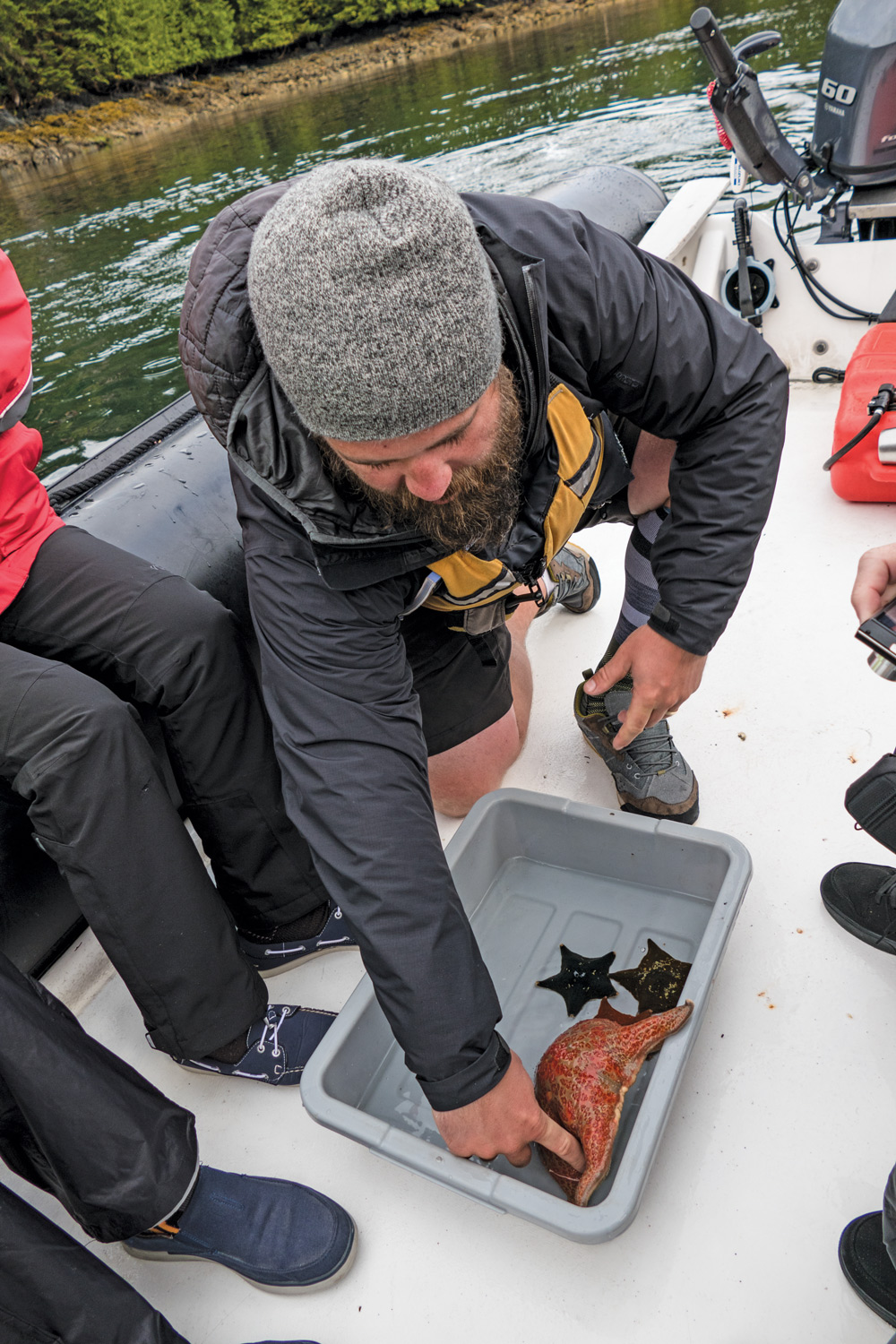Civilization in the distance
The pristine cruising grounds in British Columbia’s Haida Gwaii Islands are a step back in time
Passing Cloud sliced cleanly through the calm passages between islands and outcroppings with SGang Gwaay near the small town of Ninstints on Anthony Island, our first Haida village and a World Heritage site, identified as our first of many shore excursions. As only 12 people are allowed ashore at one time at any of the Haida villages, Matt had radioed ahead on the VHF to the Haida Watchman at SGang Gwaay to let them know we were on our way. I think we had a bit of an “in” as James, the Haida Watchman traveling with us, had spent the past 13 summers there, caring for and showing visitors the site.

This was our first taste of getting around the islands and the routine became a twice daily ritual. At first it was a real mission but as the week went on, it became the norm. The drill went like this: First, we layered our clothes, long underwear, water-resistant pants, sweaters, topping everything with full rain gear; then find your boots that are stowed on deck, haul them on over thick socks, making sure your pants are carefully tucked in; lastly, we donned life preservers, all labeled with names of animals and creatures of Gwaii Haanas, ensuring that we didn’t have to fiddle with them each time to get the right fit. Mine was Eagle. By this time, the dinghy was alongside the boarding ladder and we carefully climbed down to the bouncing craft for the trip to shore.
With no docks or ramps, the only way ashore is by wading through often knee-deep water. Sliding over the side of the dinghy into gently lapping water that covered slippery rocks, I was happy to accept an extended hand to steady me as I waded ashore into a fairy wonderland. And I was very grateful for the waterproof boots provided on board.
Just above the high-tide mark, the ancient forest soared above us. Ken, one of the SGang Gwaay Watchmen met us and led the way along the wooden boardwalk that meandered through the trees and dense vegetation, the stillness heavy around us. Thick mosses carpeted the forest floor and tiny mushrooms and minute flowers hid in plain sight.

At the ancient village site, considered sacred among the Northwest Coast First Nation people, we were astounded by the number of fallen and upright poles, house pits and standing and fallen posts and beams from the 20 longhouses that had occupied the site.
Once again, the silence filled in, but this time it brought a sense of reverence, as we considered the lives of the people who used to occupy the village. In the mid-1800s, the Haida population was decimated, reduced to less than 600 by European diseases introduced by loggers and miners. The Haida people, with no defenses against these scourges, believe that the remains of many ancestors who died during this time are here in the village and that their spirits remain here as well.
Back on Passing Cloud, with the weather and sea conditions looking good, skipper Matt made the decision to go on the outside, west of the archipelago and south to round Cape St. James, the most southerly point of Gwaii Haanas. This is not a common occurrence, as the seas and weather on the west coast are notorious for their ferocity, and considered one of the most dangerous stretches of Canadian waters. But this day we were blessed with sunshine and a moderate breeze.
Up went the sails, and the boat came alive. On a beam reach, we raced south and with great joy and I took the wheel. The crew trimmed and for the next couple of hours, we watched islands slip behind us. There was great excitement as we sailed amidst a cloud of tufted puffins that roost on these islands. For birdwatchers, Gwaii Haanas is paradise. Peregrine falcons, bald eagles, trumpeter swans, sandhill cranes, murrelets, shearwaters, cormorants and oyster catchers are just a few of the more than 260 bird species found in the islands.

Comments